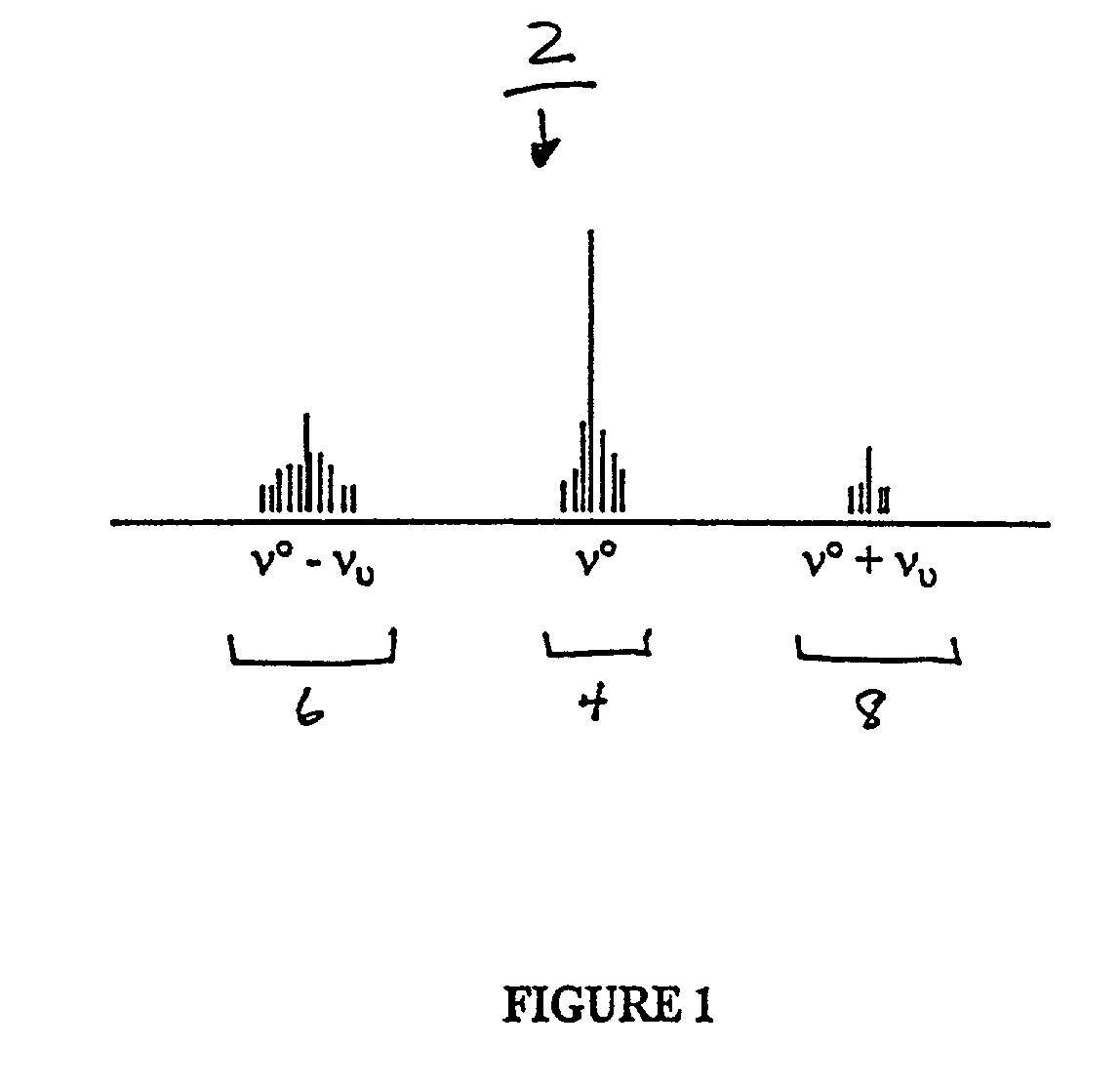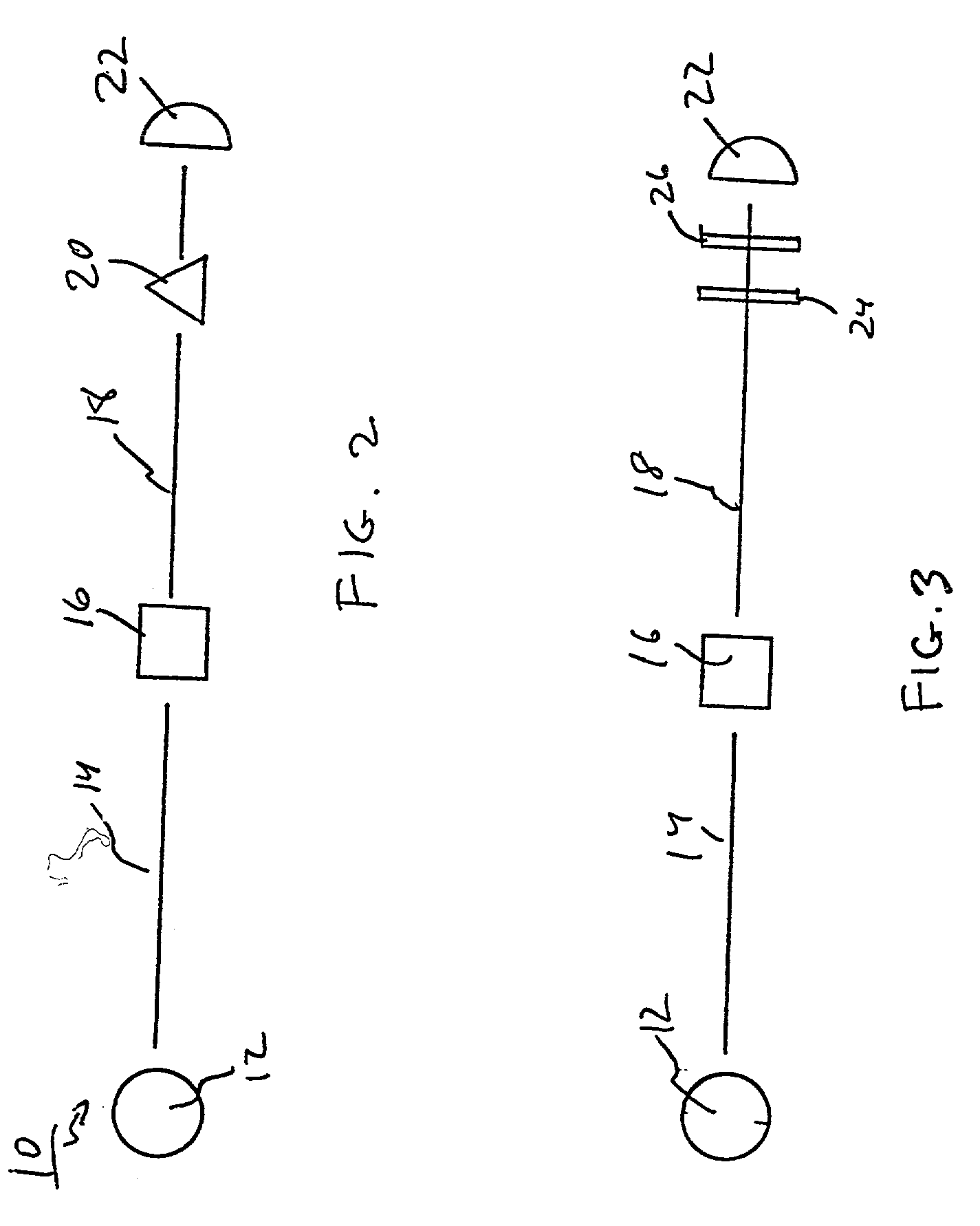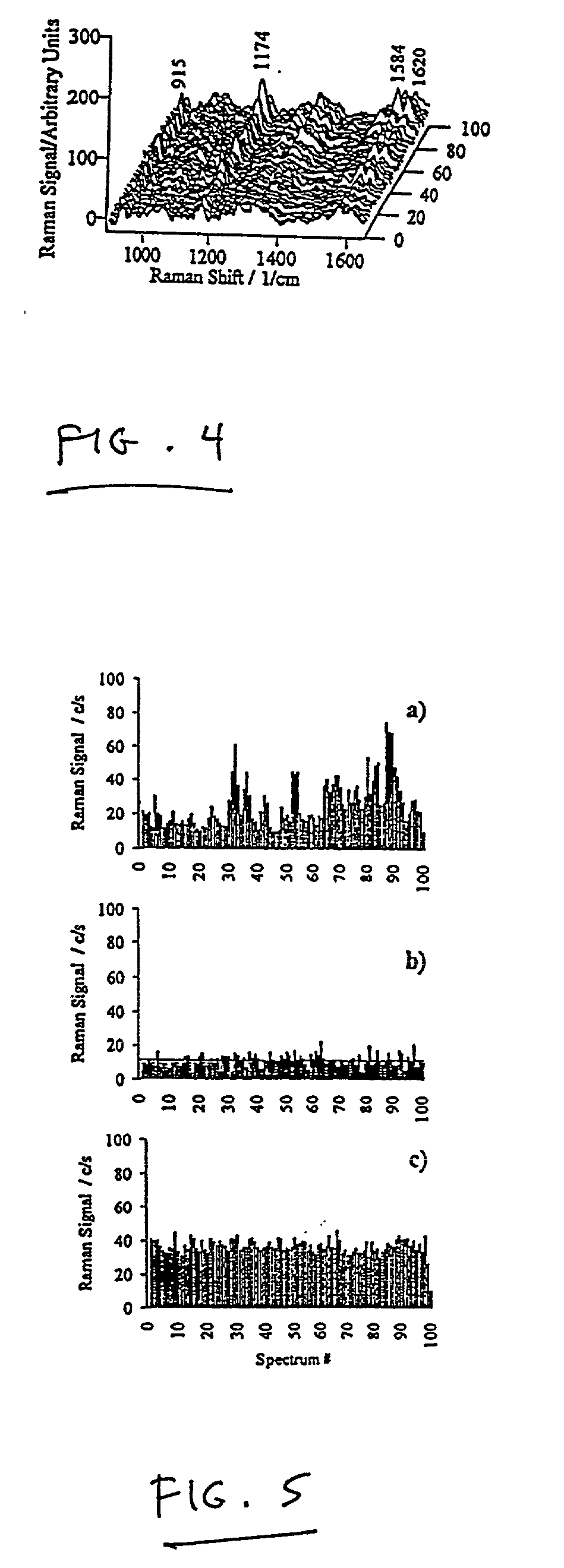Single molecule detection with surface-enhanced Raman scattering and applications in DNA or RNA sequencing
a single molecule and raman scattering technology, applied in the field of single molecule detection with surface-enhanced raman scattering and applications in dna or rna sequencing, can solve the problems of radioactive labeling or fluorescence tags, disassembly or change of raman signals after, etc., and achieves reduced brownian motion, reduced brownian motion, and longer residence time
- Summary
- Abstract
- Description
- Claims
- Application Information
AI Technical Summary
Benefits of technology
Problems solved by technology
Method used
Image
Examples
example 2
1,1'-diethyl-2,2'-cyanine (Pseudoisocyanine)
[0076] This example illustrates the detection of a single molecule of pseudoisocyanine. A colloidal solution was prepared by a standard citrate reduction procedure described in Lee, et al., J. Phys. Chem. 1982, 86, 3391. Sodium chloride was added in 10.sup.-2 M concentration to achieve optimum SERS conditions. Sodium chloride in such low concentration does not change the colloidal structure as is demonstrated by the unchanged extinction spectra of the colloidal solution after additions of sodium chloride. A 10.sup.-12 M pseudoisocyanine solution in methanol was added to this colloidal solution to produce pseudoisocyanine solutions having concentrations of 5.times.10.sup.-13 M and 3.times.10.sup.-13 M. The average number of molecules contributing to the Raman signal at these dye concentrations in a 3 pL probed volume was estimated to be 0.9 and 0.6, respectively. FIG. 7 shows an extinction spectrum of the colloidal solutions and electron mi...
example 3
Crystal Violet on Silver Particles and Colloidal Aggregates
[0085] In this example, the SERS enhancement factors are compared for crystal violet (CV) adsorbed on spatially isolated 10-25 nm sized spherical colloidal silver particles and on colloidal aggregates of various sizes between 100 nm and 20 .mu.m. Colloidal solutions were prepared by a standard citrate reduction procedure (Lee, et al., as in Example 1), or by laser ablation (Fojtik, et al., Ber. Bunsenges, Phys. Chem. 97 (1993) 252; Nedderson, et al., Appl. Spectry 47 (1993) 1959). Experiments are performed at 407 nm excitation (single particle plasmon resonance) and at 830 nm NIR excitation. From the absorption spectrum of crystal violet, it can be concluded that at these wavelengths nearly no molecular resonance Raman effect contributes to the observed total enhancement. The colloidal solutions have been prepared by a standard citrate reduction procedure or by laser ablation. SERS samples are prepared as described in Exampl...
example 4
Adenosine Monophosphate (AMP) and Adenine
[0087] The ability to detect adenosine monophosphate and adenine provide an example for applying the methods of the present invention to DNA or RNA base sequencing. Colloidal solutions were prepared by a standard citrate reduction procedure (Lee, et al., as in Example 1), or by laser ablation (Fojtik, et al., Ber. Bunsenges, Phys. Chem. 97 (1993) 252; Nedderson, et al., Appl. Spectry 47 (1993) 1959). Experimental conditions described in Example 3 for near infrared excitation are also used here. FIG. 14 shows surface enhanced Stokes and anti-Stokes Raman spectra of adenosine monophosphate (AMP) and of adenine. Spectra display the strong Raman line of the adenine ring breathing mode at 735 cm.sup.-1 and lines in the 1330 cm.sup.-1 region. SERS spectra of adenine and AMP are identical showing sugar and phosphate does not prevent the strong SERS effect of adenine.
[0088] Effective Raman cross-sections of the order of 10.sup.-16 cm.sup.2 / molecule c...
PUM
| Property | Measurement | Unit |
|---|---|---|
| size | aaaaa | aaaaa |
| size | aaaaa | aaaaa |
| wavelength | aaaaa | aaaaa |
Abstract
Description
Claims
Application Information
 Login to View More
Login to View More - R&D
- Intellectual Property
- Life Sciences
- Materials
- Tech Scout
- Unparalleled Data Quality
- Higher Quality Content
- 60% Fewer Hallucinations
Browse by: Latest US Patents, China's latest patents, Technical Efficacy Thesaurus, Application Domain, Technology Topic, Popular Technical Reports.
© 2025 PatSnap. All rights reserved.Legal|Privacy policy|Modern Slavery Act Transparency Statement|Sitemap|About US| Contact US: help@patsnap.com



